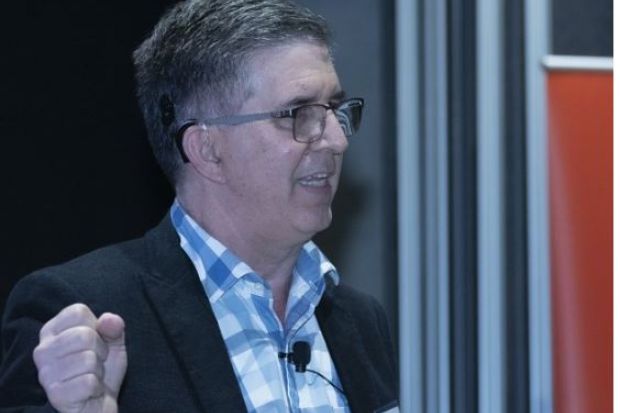Greg Watkins still does not know why his “fantastic” hearing started deserting him in his forties, when he was developing telecommunications equipment for projects including Australia’s nascent broadband network.
“I’m an engineer,” he said. “It’s important for me to know how things work and why things happen. I was frustrated that there was no explanation for my hearing loss. My specialist said: ‘There is an explanation – we just don’t know what it is yet. One day we will.’ I’m not sure whether he was a joker or a philosopher.”
It was time for a change anyway. “I was looking for something different. As my hearing deteriorated, I saw an opportunity to combine my knowledge of disability and my technical experience to make improvements for people with hearing problems. That’s what led me back to university.”
From 2014, Dr Watkins compressed his working week into four days and devoted the fifth to part-time doctoral studies. He also traded his hearing aids for cochlear implants, the bionic marvels pioneered almost four decades earlier by an ear, nose and throat surgeon who – like Dr Watkins – left his profession in adulthood to focus on biomedical research.
Dr Watkins’ PhD, conferred by the University of Sydney earlier this month, yielded three peer-reviewed conference papers, two journal articles and a methodology that could spawn improvements to an already life-changing technology.
Now profoundly deaf, Dr Watkins’ cochlear implants enable him to conduct conversations as well as any hearing person. But his discernment of speech degenerates in noisy environments. That could change if the sound processor, the electronic device behind his ear that converts sound to nerve stimulation, was configured differently.
There are “literally thousands” of possible configurations, he says. The challenge lies in evaluating how well they work. This is normally done by shutting cochlear recipients in sound booths for hours and testing which configurations produce the most intelligible speech for most of them. “The outcomes for different people vary a lot, so you’ve got to take an average,” Dr Watkins says.
In practice, only a fraction of the possible configurations are tested because the evaluation process is costly, time-consuming and exhausting. “It’s highly likely that more optimal configurations would be available if there was a way to evaluate more of them,” Dr Watkins says. “We could come up with personalised configurations.”
Working at the SydneyBionics lab in the university’s School of Biomedical Engineering, Dr Watkins has conjured a solution: a “predictor” based on retrospective analyses of clinical datasets from past hearing tests.
His team mapped the data against a metric called the “output signal to noise ratio” (OSNR) and used the results to calculate the likely OSNR in different listening conditions.
The aim was to prejudge how well particular configurations would work with particular individuals.
“For normal-hearing people, the ratio of speech to noise is a pretty good predictor of how well they will understand speech,” Dr Watkins says. “But for a cochlear implant recipient, the sound processor changes the ratio. My idea is really simple: this changed ratio can be a good predictor of intelligibility.”
Studies supported the idea. Dr Watkins’ most recent research, published in the journal of the American Auditory Society, found that the predictor gave comparable results to actual hearing tests. He says the approach can be used not only to tune existing sound processors to individual patients – the bionic ear equivalent of precision medicine – but also to “bench test” ideas for superior processors.
In a disrupted year, Dr Watkins counts himself fortunate. “I’m deaf, but I can hear. How lucky is that? Problems generate opportunity. It sounds clichéd, but a difficulty in my life led me to investigate other options.”
A two-year contract as a lecturer has extended the adventure to the beginning of 2022, at least. “As a student and now as a staff member, I find it fantastic to be working with undergraduates. There are some wonderful minds coming through the system – a range of strengths and a freshness of outlook.”
Arguably, Dr Watkins’ lectures are more functional than many because he tells each new group about his deafness. “We spend a few minutes talking about the things that will help me understand them – speak clearly, look at me and think about what you want to say. If you’re not sure what you’re going to say, it’s unlikely that I’m going to follow.
“The reception is always very positive. Almost everyone knows someone with a hearing disability. Almost without exception, if you give people information that will help, people want to help.”




